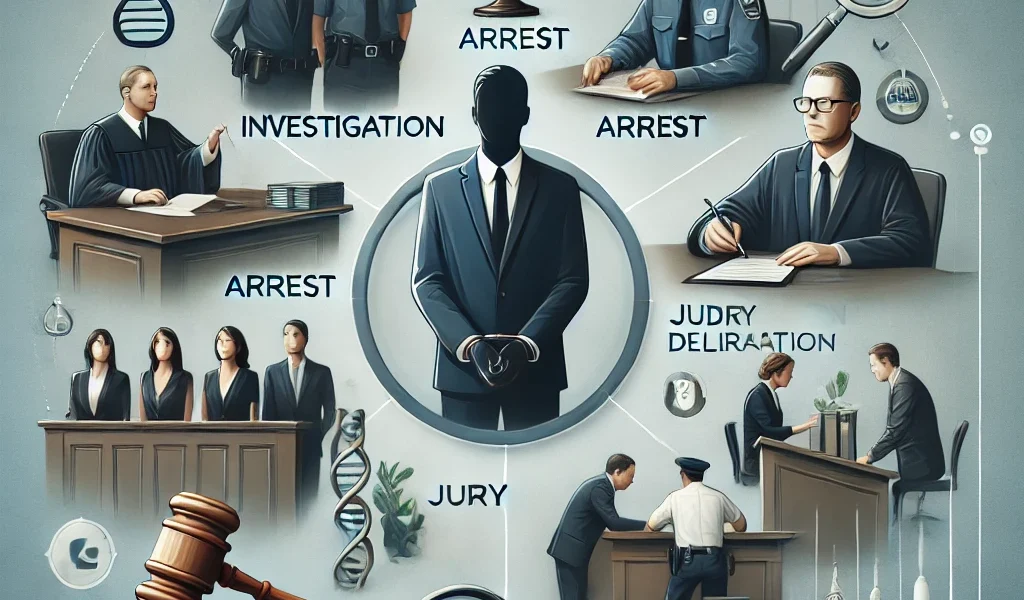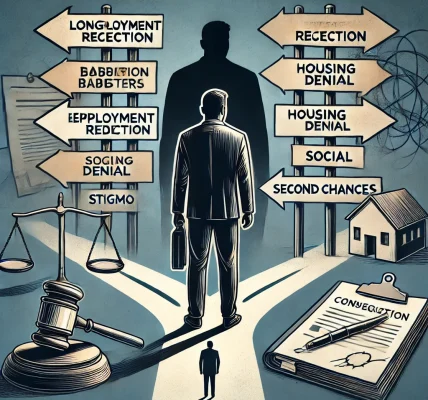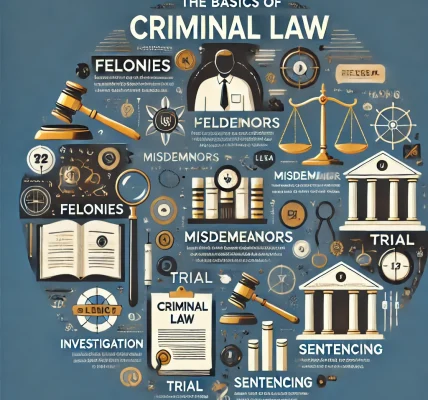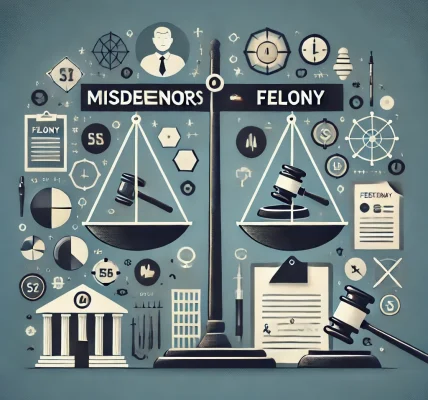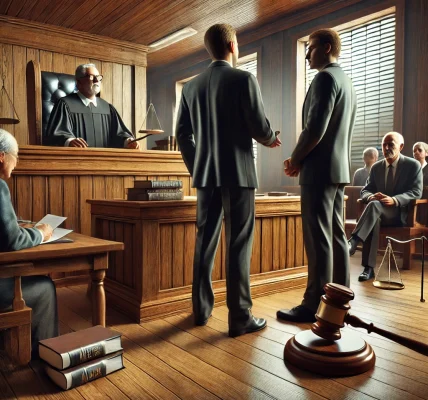Introduction
Understanding the criminal trial process is crucial for anyone facing criminal charges or those interested in the legal system. A criminal trial is a structured procedure designed to ensure justice by determining the guilt or innocence of an accused person. Each stage of the trial follows strict legal protocols to protect the rights of both the accused and the prosecution.
This guide will walk you through the step-by-step process of a criminal trial, from the initial investigation to the final verdict and sentencing.
1. Investigation and Arrest
The first stage of any criminal trial begins with an investigation by law enforcement. This involves:
- Gathering evidence (physical evidence, digital records, forensic reports, etc.).
- Interviewing witnesses.
- Conducting surveillance or undercover operations (if applicable).
If the authorities find enough evidence, they may issue an arrest warrant, leading to the suspect’s arrest. During the arrest, the suspect has certain rights, including:
- The right to remain silent.
- The right to an attorney.
- The right against self-incrimination.
2. Booking and Initial Hearing
After the arrest, the suspect is taken to the police station for booking, where law enforcement records:
- The suspect’s personal details.
- The charges against them.
- Their fingerprints and photographs.
The suspect is then presented before a judge for an initial hearing (also known as an arraignment). The judge:
- Reads the charges to the defendant.
- Explains their legal rights.
- Asks whether they plead guilty or not guilty.
- Determines bail or pretrial detention.
3. Pretrial Motions and Plea Bargaining
At this stage, both the prosecution and the defense may file pretrial motions, such as:
- Motion to Dismiss: Request to drop the case due to lack of evidence.
- Motion to Suppress Evidence: Request to exclude evidence obtained illegally.
- Change of Venue: Request to move the trial to another location to ensure fairness.
Plea Bargaining
In many cases, the prosecution and defense negotiate a plea bargain to:
- Reduce charges.
- Reduce sentencing.
- Avoid a lengthy trial.
If the defendant agrees to a plea bargain, the case may end here.
4. Jury Selection (Voir Dire)
If the case proceeds to trial, a jury selection process takes place (except in bench trials where only a judge decides). The process involves:
- Interviewing potential jurors.
- Eliminating jurors with potential biases.
- Finalizing a jury panel (usually 12 jurors in serious cases).
5. Opening Statements
Once the trial begins, both sides present their opening statements:
- The prosecution outlines the case against the defendant.
- The defense presents an overview of their argument and strategy.
Opening statements set the tone for the trial but do not include evidence yet.
6. Presentation of Evidence and Witness Testimonies
Prosecution’s Case
The prosecution presents its case first by:
- Calling witnesses to testify.
- Presenting physical evidence (documents, weapons, DNA, surveillance footage, etc.).
- Conducting direct examination of witnesses.
The defense has the right to cross-examine these witnesses to challenge their credibility.
Defense’s Case
The defense may:
- Call their own witnesses.
- Present counter-evidence.
- Argue legal defenses (e.g., self-defense, alibi, lack of intent).
- The defendant may choose to testify (though they are not required to).
7. Closing Arguments
After both sides present their evidence, they give their closing arguments:
- The prosecution summarizes the evidence proving the defendant’s guilt.
- The defense argues for the defendant’s innocence or raises doubts about the evidence.
8. Jury Instructions and Deliberation
The judge provides the jury with instructions on how to apply the law to the case. The jury then deliberates in private to reach a verdict.
- If the jury cannot reach a decision, it results in a hung jury, leading to a potential retrial.
- If they reach a unanimous decision, they announce the verdict.
9. Verdict Announcement
The verdict is read in court:
- Guilty: The defendant is convicted and moves to sentencing.
- Not Guilty: The defendant is acquitted and released.
- Mistrial: If legal errors occur, a retrial may be ordered.
10. Sentencing and Appeals
If the defendant is found guilty, the judge determines the sentence, considering:
- Severity of the crime.
- Defendant’s criminal history.
- Impact on victims.
Sentences can include:
- Fines.
- Probation.
- Community service.
- Imprisonment.
- Death penalty (in some jurisdictions).
The convicted party may also file an appeal to a higher court to challenge the decision.
Conclusion
The criminal trial process is a structured and complex system designed to ensure justice while protecting the rights of both the accused and society. Whether you are involved in a case or simply seeking knowledge, understanding these steps can help you navigate the legal system with greater awareness.
